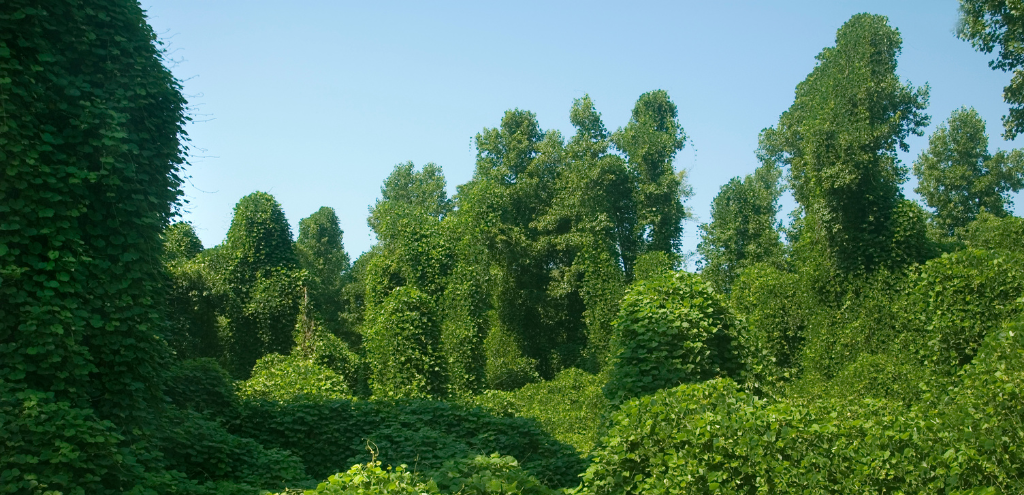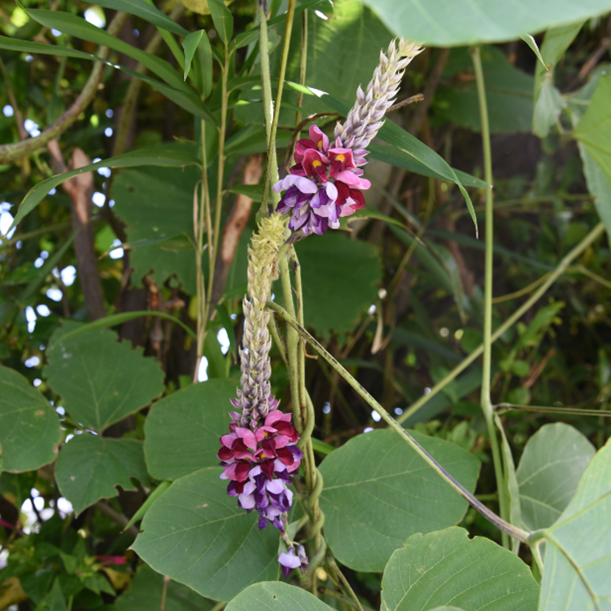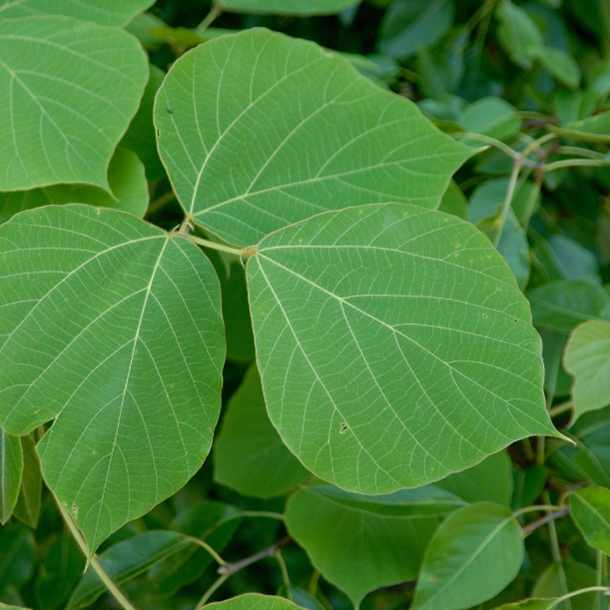THE LEAFLET

Most UN-Wanted: Kudzu
Casey Trees’ most unwanted invasive plant species series continues with week four looking at yet another highly problematic, tree-harming plant: Kudzu. The invasive was brought to the United States in the late 19th century during the Philadelphia Centennial Exposition where it was sold as an ornamental plant to prevent erosion. Over time this plant took over many open fields and forest patches growing as much as one foot per day.
Over these past few weeks, we have covered the top invasive species in the DMV including: English Ivy, Porcelain Berry, and Bush Honeysuckle. For this week and next, we will be looking at the invasive plant species our staff encounter most in the field. Invasive species are one of our urban forest’s largest threats. These non-native plants cause stress and environmental harm as they lack natural predators and competition.
Kudzu flourishes in climates with hot summers and mild winters like the DMV. During these hot summers, Kudzu kills forests by covering the canopy with its vines, which weigh up to 400 pounds and grow up to 100 feet long. These vines can reach up to 10 inches in diameter and take resources such as sunlight from any plants underneath. In winter months Kudzu is dangerous with its vines freezing over trees and other native plants.
How to spot Kudzu:
Kudzu can be spotted by its three alternating/compound oval shaped leaves. These leaves get up to 4 inches across. Kudzu’s dark brown bark is semi-woody and described as rough and rigid when mature. Additionally, there may be lobes on the vines; however, this is only if Kudzu is growing in the sun. In mature plants, you can find purple and red flowers from June to September. Roots can reach 7 inches in diameter and go over 10 feet underground.
How to remove Kudzu:
Kudzu is difficult to remove and takes continuous maintenance to control. Like our previously mentioned invasive species such as English Ivy and Bush Honeysuckle, Kudzu can be removed; however, it is best to remove this invasive species in the winter when other vines such as poison ivy are dormant. When removing, make sure to wear long sleeves and pants along with protective gloves to ensure protection from other plants.
For small and new Kudzu patches it is recommended to continuously weed and mow the areas until the Kudzu is weakened significantly enough that it is controlled from spreading. For mature Kudzu, it is recommended to lift the vines away from the ground or plant it is covering and use pruners, loppers, or shears to cut at vines. Follow by removing the vines by hand. Vine removal will have to be repeated as damaged vines re-sprout within two years of being cut last.
Casey Trees continues to work with partners to remove invasive species from sites throughout the DMV. Join us in continuing the fight against invasive species by following these steps to remove Kudzu in your own yard. Additionally, join us for our upcoming invasive removals that take place during our winter and summer tree care seasons.

